Last month we’ve given you a brief primer of the HTC Windows Phone 8x and we’ve recently posted the full review of its more affordable brother, the HTC Windows Phone 8s. Now let’s see if this taller handset is worth your extra cash in our full review after the break.
Before we get into the actual review, we’d like to point out that the handset in focus is actually an engineering unit as confirmed by the gentleman from HTC who handed us the device. With this mind, the actual results of benchmark tests and/or battery life might be different from the real thing.
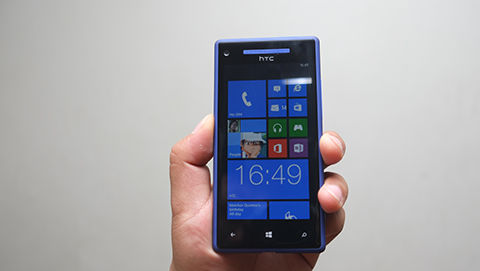
Also, it’ll be beneficial if you skim through our full review of the HTC Windows Phone 8S, as well as our first impression of this device (assuming that you haven’t already) to get a get a better feel of the 8x in terms of design and construction. Why so? Well, both of these HTC handsets have a lot in common aesthetically making our 8S review a good starting point.
Display
Alright! Now that we have that squared away, let’s look in to the first noticeable difference between the Windows Phone handset – the display.
In addition to the slight difference in screen size (4” vs 4.3”), the HTC 8X also gets a minor bump on the display resolution pegging at 1280 x 720 pixels. Currently, there are only three WP8 handsets that are fortunate enough to be equipped with such resolution – HTC 8X, Lumia 920 and Samsung ATIV S – which by the way are all flagship WP devices.

It’s not, in any chance, something to be all excited about considering that other phones already come in with a FHD display. But let’s not forget that this it’s actually a first for Windows Phone handsets, as the previous iteration of the OS only allows 480 x 800 screen resolution. But even if the platform allows a higher resolution, we don’t think it’s rational to put a 1080p resolution on a 4.3-inch handset.
With pixel density reaching to 342ppi, the HTC 8X’s HD display should be enough to provide pleasurable viewing experience. As a bonus, it also offers a decent viewing angles and good outdoor legibility which is a plus for those who’re often out in the open.
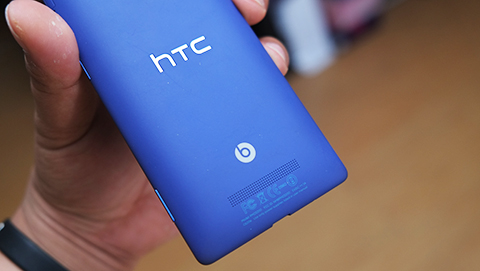
Audio
As with any recent note-worthy HTC handset, the 8X is also equipped with, you guessed it, Beats Audio enhancement. Love it or hate it, it’s part of what you paid for when you got their smartphones. So it’s either you manually turn of the “enhancement” (which by the way makes the sound quality really terrible) or live with the fact that most of your tracks will tend to be a little bass-y. It’s your call, but if you have to choose between the two, we suggest taking the lesser evil.
Call Quality
Now here’s something interesting. We’ve experienced quite a number of calls being disconnected when we’re using the phone. And at times when the connection is not being cut off, the conversation gets a bit garbled, sometimes to a point that it’s no longer audible.
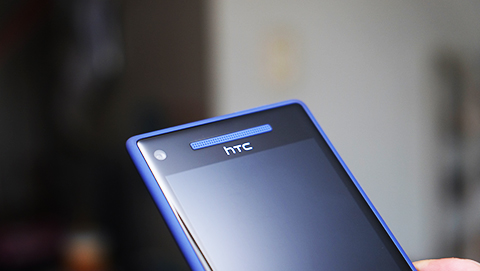
This is either caused by the fact that phone was an engineering unit or that my network is not living up to its ENJOYable promise which has been the case since I moved to a new a place. To test if this is a network-related concern, we tried using a SIM from a different telco. But even after doing so, we still suffered the same fate suggesting that the phone is the culprit. It’s kinda nice to know that my network isn’t causing this call mishap, all we (Louie and I) need to figure out now is when we’ll get a fast and reliable internet connection out of our current UnliSurf plans.
Performance
May be the most significant difference between the 8X and its meeker sibling is the configuration inside their colorful and deceivingly thin body. At the heart of the 8X is a 1.5GHz dual-core S4 Plus processor with a gigabyte of RAM in tow. It may not sound much, but this duo packs a punch and is more than enough to satisfy your basic smartphone needs.
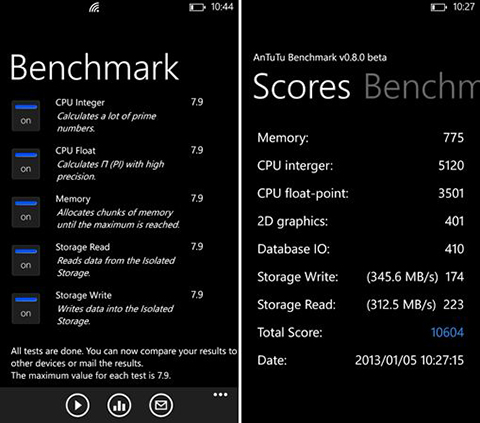
Based on the benchmarking test, the 8X actually did quite well tallying a perfect score in the Benchmark Free and also got a pretty decent score (10,604) on Antutu Benchmark. WP Bench gave the phone an average score of 39.5 (the highest being 40). Now if you’re curious to see how the 8X stacks up against other WP devices, here’s the current ranking courtesy of WP Bench.

This handset sits at the 31st spot with an average score of 231.67. The Samsung ATIV S only bested HTC’s flagship device by a hair which got an average score of 231.69. But before you get all jumpy about its lackluster place in the ranking, we’d like to point out that the chart is dominated (and filled with) by Lumia 820s from different countries. If we were to combine all of this 820s into a single entry, then the 8X (as well as the ATIV S) should be in the top 5 spot.
The HTC 8X’s remarkable benchmark results extends to real life usage. It was snappy and stayed responsive all throughout its stay. It virtually breezed through anything that we’ve thrown at it. We experienced minor hiccups along the way with the device, but having used a non-engineering unit, we can definitely say that the issue is isolated with our review unit.
Camera
The list of spot-the-difference between the HTC 8-siblings continues on, this time with the camera. The larger of the two is equipped with a far more superior snapper, and we’re not just talking about the difference in megapixel count on the sensors here nor the fact that 8S doesn’t have a secondary camera.
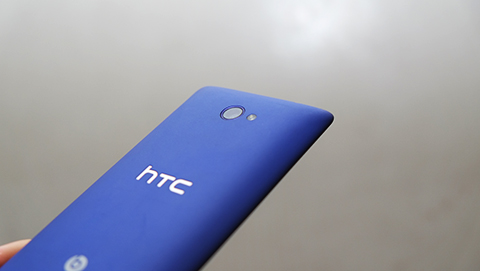
One of the major improvements that the WP8 over prior versions is that it allows manufacturers to be a bit more creative with their handset’s camera. With this new found versatility in the OS, companies are now able to incorporate their own imaging technology in to their device, PureView for Nokia and ImageSense processor for HTC.
Let’s take a step back and reflect a bit on the HTC ImageSense processor. This technology made its debut last year and the first handsets that were outfitted with such technology were the One Series smartphones. This, along with the camera’s bright f2.0 lens and backside illuminated sensor allows the phone’s camera to perform well even in low-light conditions. It’s kinda like the case for the 8X, minus the other cool features such continuous shooting.
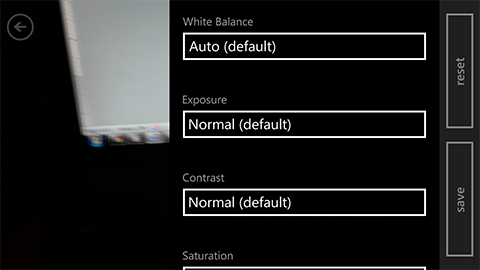
Although still lagging behind the Lumia 920 in terms of imaging prowess, the HTC 8X’s camera has a pretty respectable performance to it as shown in these images. The camera app offers a handful of customizations should you wish to be more creative with your snaps. You can see some sample images we took using the HTC 8X here.
As you would’ve guessed, the 8X’s impressive camera performance also extends to its video recording capabilities. The camera is capable of recording full HD clips even in dim situations with only a tolerable amount of distortion.
0
Unlike the 8S, the 8X has a front-facing camera, and not just an ordinary one if we may add. As if outfitting their flagship WP8 handset with a 2.1MP secondary snapper wasn’t enough, HTC has also thrown in a wide-angle lens in the mix as well as the capability to record 1080p clips. Just to show give you an idea of just how wide the coverage of the 8X’s FF camera, here’s an image that shows the HTC 8X (above) and the O+ phone (below).
Battery
We didn’t get quite a long mileage with the HTC 8X that was handed to us. It only lasted a quarter of a day with moderate to heavy usage. This includes leaving the cellular data switched on with Twitter, Facebook and email running on the background, roughly two hours of internet browsing and we watched a couple of movies with it.
Since the handset was an engineering unit, we can probably expect a longer battery life, approximately 2-3 hours or even more, with the real thing. Nothing to be too excited about, it’s just the typical mileage we’ve grown to be accustomed to from a handset that has an under 2KmAh power source.
HTC Windows Phone 8X specs:
4.3-inch S-LCD2 HD display @ 1280×720 pixels, 342ppi
Corning Gorilla Glass 2
Snapdragon S4 Krait (MSM8960) 1.5GHz dual-core
Adreno 225 GPU
1GB RAM
16GB internal storage
3G/HSDPA
WiFi 802.11 b/g/n
Bluetooth 3.1
GPS with aGPS support, GLONASS
8MP autofocus camera w/ flash, 2.1MP secondary camera
1080p video @ 30fps
1800mAh Li-Po battery
Windows Phone 8
Dimension: 132.4 x 66.2 x 10.1 mm
Weight: 130g
Conclusion
The HTC Titan was the first handset that I had the luxury of reviewing last year. I never thought that ten months later I’d be fortunate enough to review its successor – the HTC Windows Phone 8X. To be honest, there isn’t much of a difference in terms of how the platform works. It still has the same simple yet colorful Live Tiles that users have grown accustomed to. Microsoft has added a few improvements to it, but it retains the same old feel that fascinated me since the beginning.
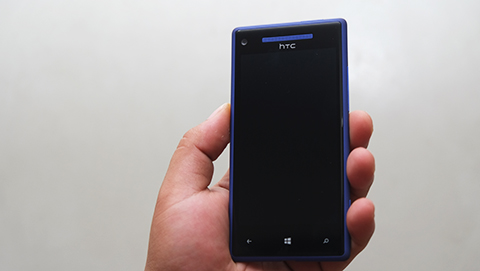
It comes in a smaller package compared to its ancestor, but packs a more solid punch thanks to some minor enhancements in the hardware components. Unfortunately though, some of the gripes that I had with the Titan such as the lack of SD card slot and noteworthy apps are still present on this young blood. It does, however, compensate some of its weaknesses with an impressive camera (both main and secondary) and a not-too-shabby design with hip paint job.
Is it worth the extra dough? Well, in our opinion, not so much. For almost twice the price as its more modestly-spec’d counterpart, you’ll only get a better processor with twice the RAM, an improved and slightly larger display and a pair of bad ass snappers. It’s still a bit pricey at Php26,550, but may be if HTC slashes a few grands off its SRP then it’s definitely a worthy handset to consider.
Editor’s Note: This handset is an engineering unit and, as such, was still not fit for commercial use. Some parts of the hardware and firmware were not up to specification. – Yuga
The post HTC Windows Phone 8X Review appeared first on YugaTech | Philippines, Tech News & Reviews.